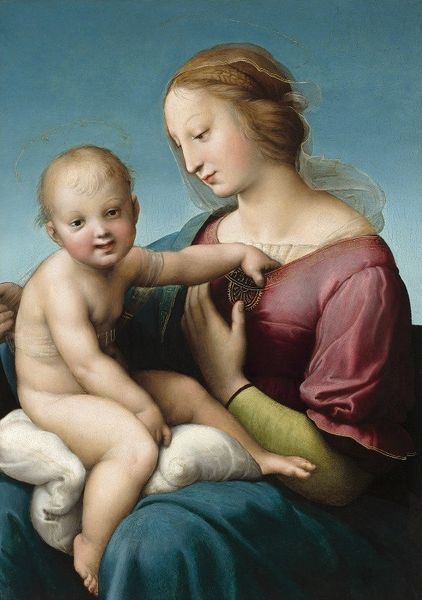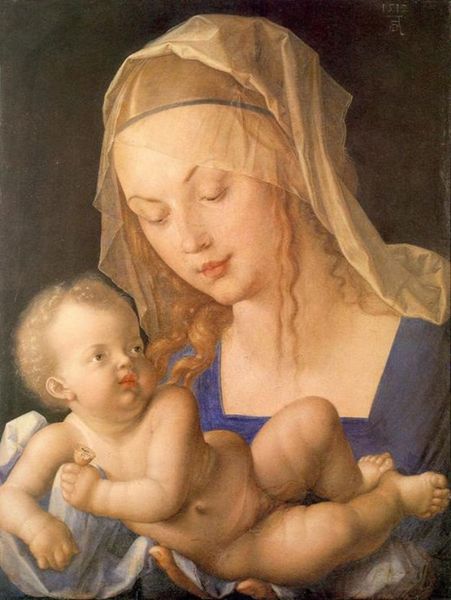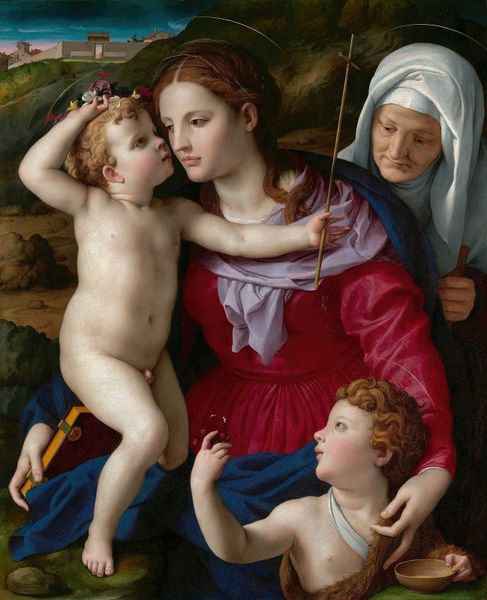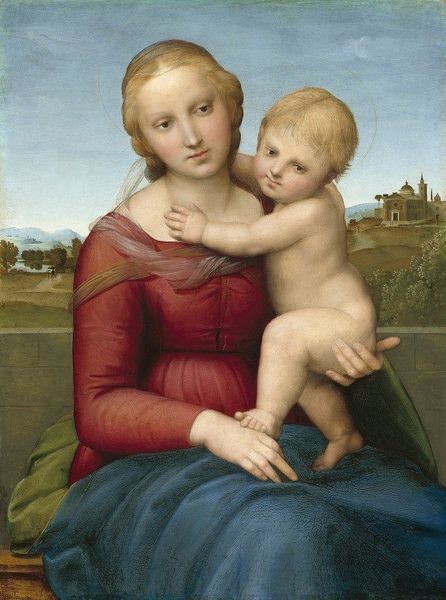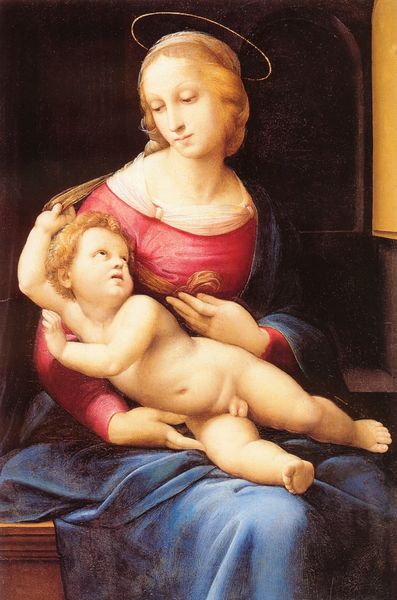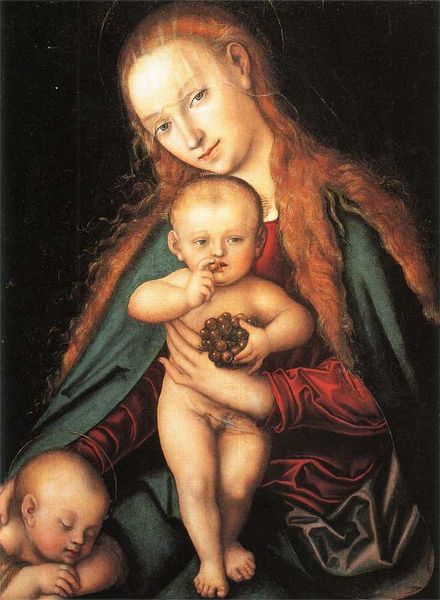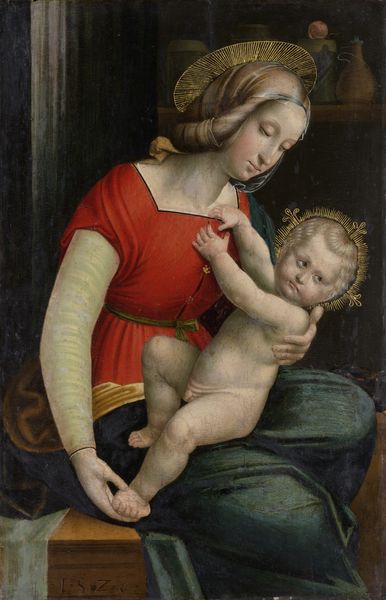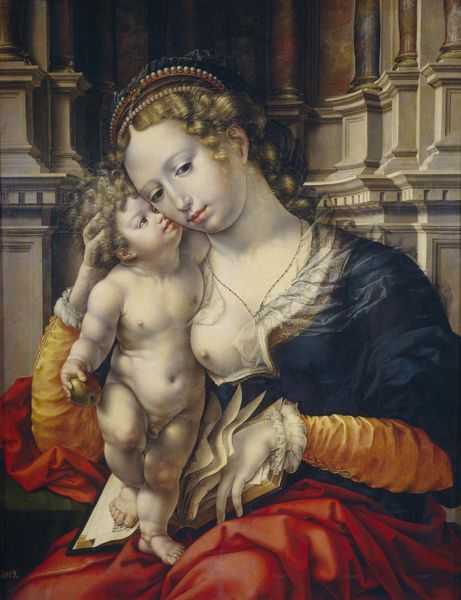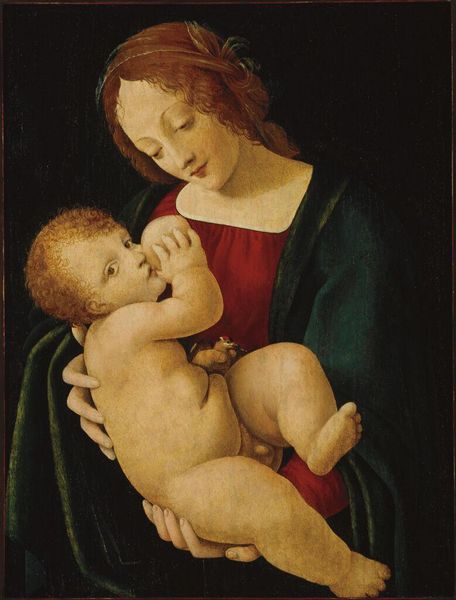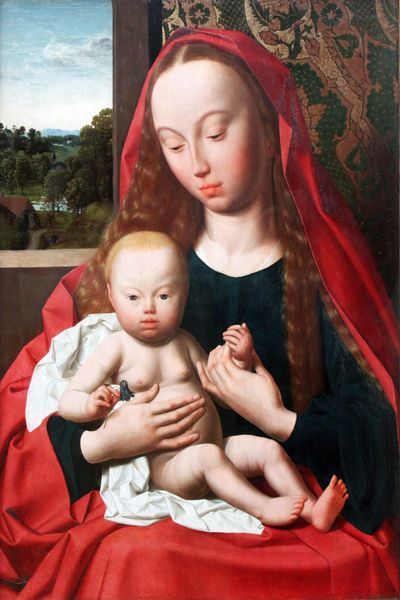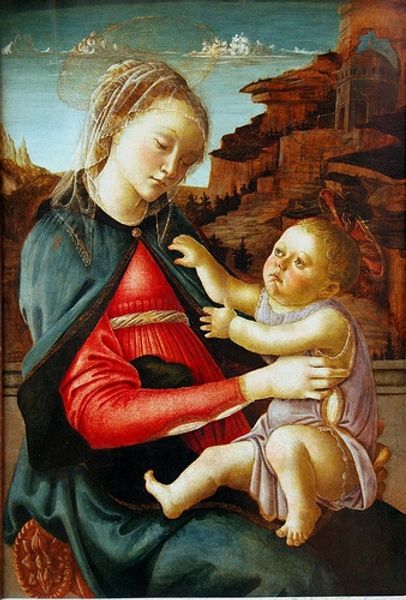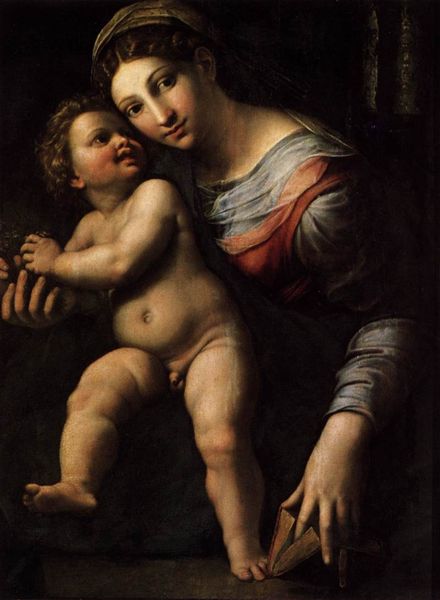
painting, oil-paint
#
portrait
#
high-renaissance
#
painting
#
oil-paint
#
landscape
#
genre-painting
#
history-painting
#
italian-renaissance
#
nude
Copyright: Public Domain: Artvee
Curator: This artwork is attributed to Raphael, called "La Madone De La Maison D’Orléans." Painted with oil paints, it showcases the quintessential Renaissance style, demonstrating humanism through both idealized form and realistic portrayal of fabric and skin. What are your first thoughts on seeing it? Editor: It's striking how domestic the scene is. The Virgin isn’t presented as a celestial figure removed from earthly concerns, but as a mother cradling her child in what looks like her private chamber. There's a powerful intimacy at play, even with the halo. Curator: Absolutely. The High Renaissance was defined, in part, by the re-engagement with classical ideals and the dignity of humanity. What looks like domesticity also conveys an elevated status – but you’re right; there’s a distinct softening of the traditional formality seen in earlier religious paintings. Editor: I'm intrigued by the use of light and shadow. The background remains mostly dark. How do you read it? Curator: That’s very typical. A darker background pushes our subjects forward, giving a very deliberate emphasis on the figures of Mary and the Christ Child. But it’s also a sign of the influence of artists coming from the north and their innovations with glazing. Editor: It really draws your attention to the vulnerability in the baby’s face, even a bit of petulance. And yet, in juxtaposition, Mary embodies calm acceptance and almost resignation to her child's fate, I think. Curator: Very much so, yes. Religious art of the period frequently employed glances, gestures and postures that viewers understood intimately; consider for a moment that those familiar references can become lost to contemporary audiences. How do we grapple with such shifts in perception? Editor: Precisely! What might have felt intuitive at one time requires us to become translators, constantly interrogating the circumstances surrounding not only the creation but the evolution of the work in a modern context. Looking at art such as this helps us contextualize not just historical values, but question modern ones as well. Curator: An interesting intersection to keep in mind when considering an artwork with religious associations hanging in secular exhibition spaces. Thanks for pointing that out!
Comments
No comments
Be the first to comment and join the conversation on the ultimate creative platform.
